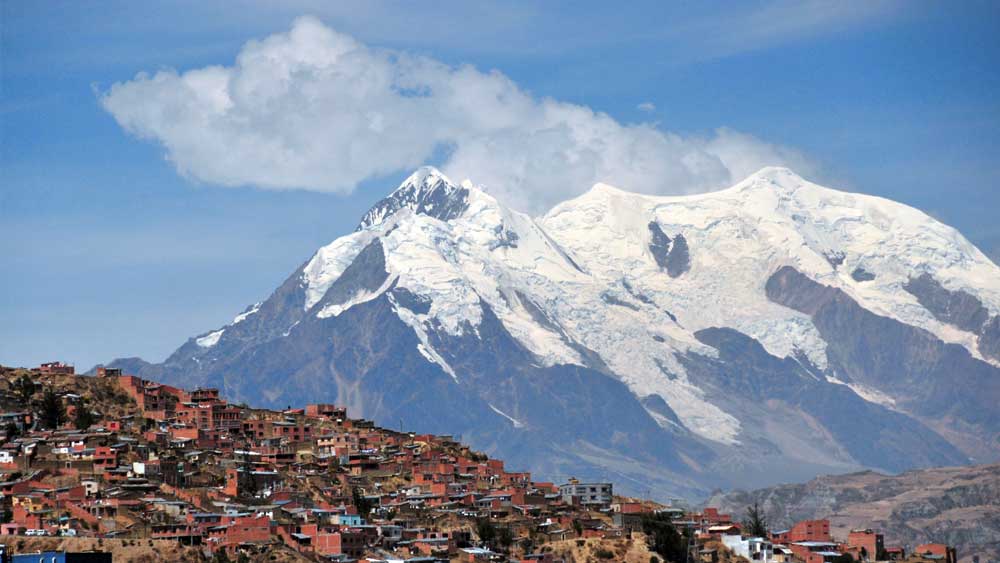On March 24, 2020, we ran a news article about how warmer weather appeared to hamper COVID-19 infections.1 New evidence could indicate that high altitudes might limit the spread of the disease as well.
A recent report details how high-altitude populations appear to have a low COVID-19 infection rate.2 Only 916 of Peru’s 141,000 COVID-19 cases came from the Andean Cusco region—around 80% percent below the national average. Bolivia’s 8,387 COVID-19 cases have been mostly in Santa Cruz—just a few hundred feet above sea level—but high-altitude La Paz had just 410 cases.
The phenomenon is currently unexplained. A peer-reviewed study in Respiratory Physiology & Neurobiology, from Australia, Bolivia, Canada, and Switzerland, examined results from Bolivia, Ecuador, and Tibet. They found populations living at altitudes above 3,000 meters (9,850 feet) reported significantly lower levels of confirmed infections than low-altitude populations. People living at high altitudes might also benefit from an ability to cope with low levels of oxygen in their blood. Other conditions not strictly related to altitude that might also tend to limit spread of COVID-19 in this study include that these are sparsely populated areas, the air is drier, and there are higher levels of UV radiation.
A researcher noted that prolonged exposure to altitude triggers a chain reaction in the lungs involving a protein known as ACE2 that might prevent pulmonary shunting—a common problem among COVID-19 patients.
References
1. Stamp, M. Warm Weather and COVID-19. Creation Science Update. Posted on ICR.org March 24, 2020, accessed June 1, 2020.
2. Tegel, S. From the Andes to Tibet, the coronavirus seems to be sparing populations at high altitudes. Washington Post. Posted on washingtonpost.com June 1, 2020, accessed June 1, 2020.
*Michael Stamp is an editor at the Institute for Creation Research.

COVID-19 Infection Rates Lower at High-Altitudes
The Latest
May 2025 ICR Wallpaper
"Now may the God of hope fill you with all joy and peace in believing, that you may abound in hope by the power of the Holy Spirit." (Romans...
Acoustic Communication in Animals
We are all familiar with vocalizations in the animal world. For example, dogs bark, birds sing, frogs croak, and whales send forth their own distinct...
Creation Kids: Crystals!
by Michael Stamp and Susan Windsor*
You're never too young to be a creation scientist and explore our Creator's world. Kids, discover...
APOLOGETICS
Playing Chess with Little Furry Critters
God’s multifarious and marvelous designs for basic creature needs are so innovatively clever and providentially purposeful that Christ’s...
Credit Only Our Creator
History was my favorite subject as a young kid. But it always puzzled me when my teachers said, “We study history so that we don’t repeat...
Genomic Tandem Repeats: Where Repetition Is Purposely Adaptive
Tandem repeats (TRs) are short sequences of DNA repeated over and over again like the DNA letter sequence TACTACTAC, which is a repetition of TAC three...
Dinosaur National Monument: Fossil Graveyard of the Flood
Straddling the border of Utah and Colorado, Dinosaur National Monument (DNM) is one of the richest exposures of dinosaur fossils in the world.1...
The Transforming Influence of Genesis: Worker Dignity and Safety
When Pharisees questioned the Lord Jesus about marriage, He answered by quoting Genesis 1:27: “But from the beginning of the creation, God ‘made...
Giant ''Meg'' Shark: Longer and Leaner?
Fossil remains of the giant shark Otodus megalodon have been found in Miocene1 and Pliocene2 rock layers, which ICR scientists...
CREATION.LIVE PODCAST
Searching for Truth Across the Globe | Creation.Live Podcast:...
How can we bring the Gospel of Jesus Christ and the truth of creation to others outside our small spheres of influence?
Host...













